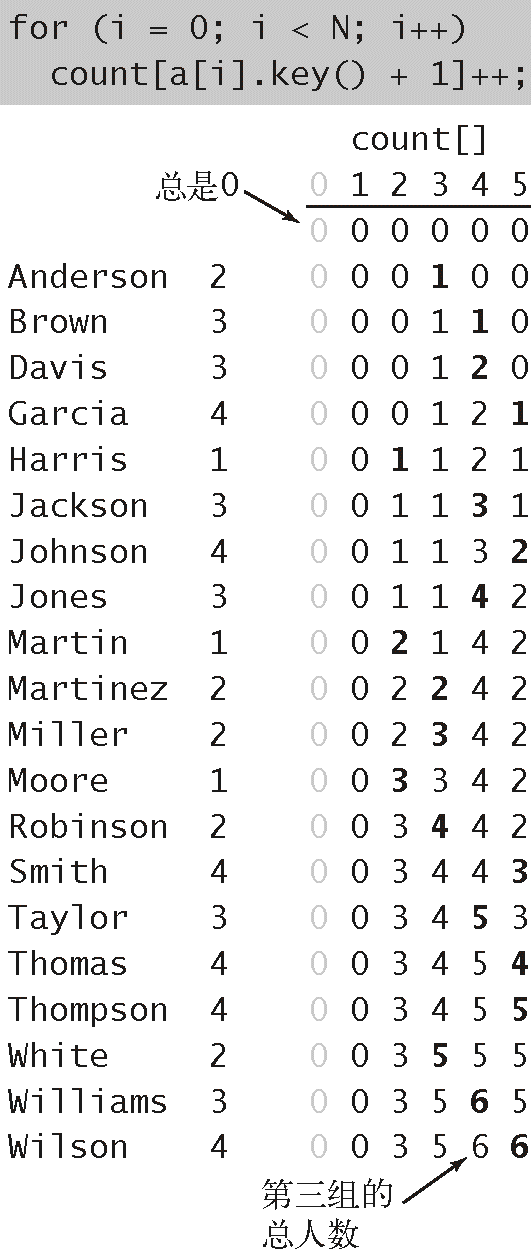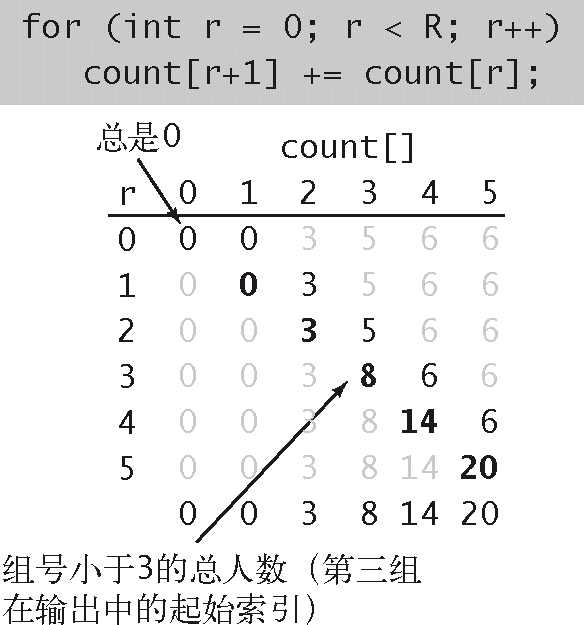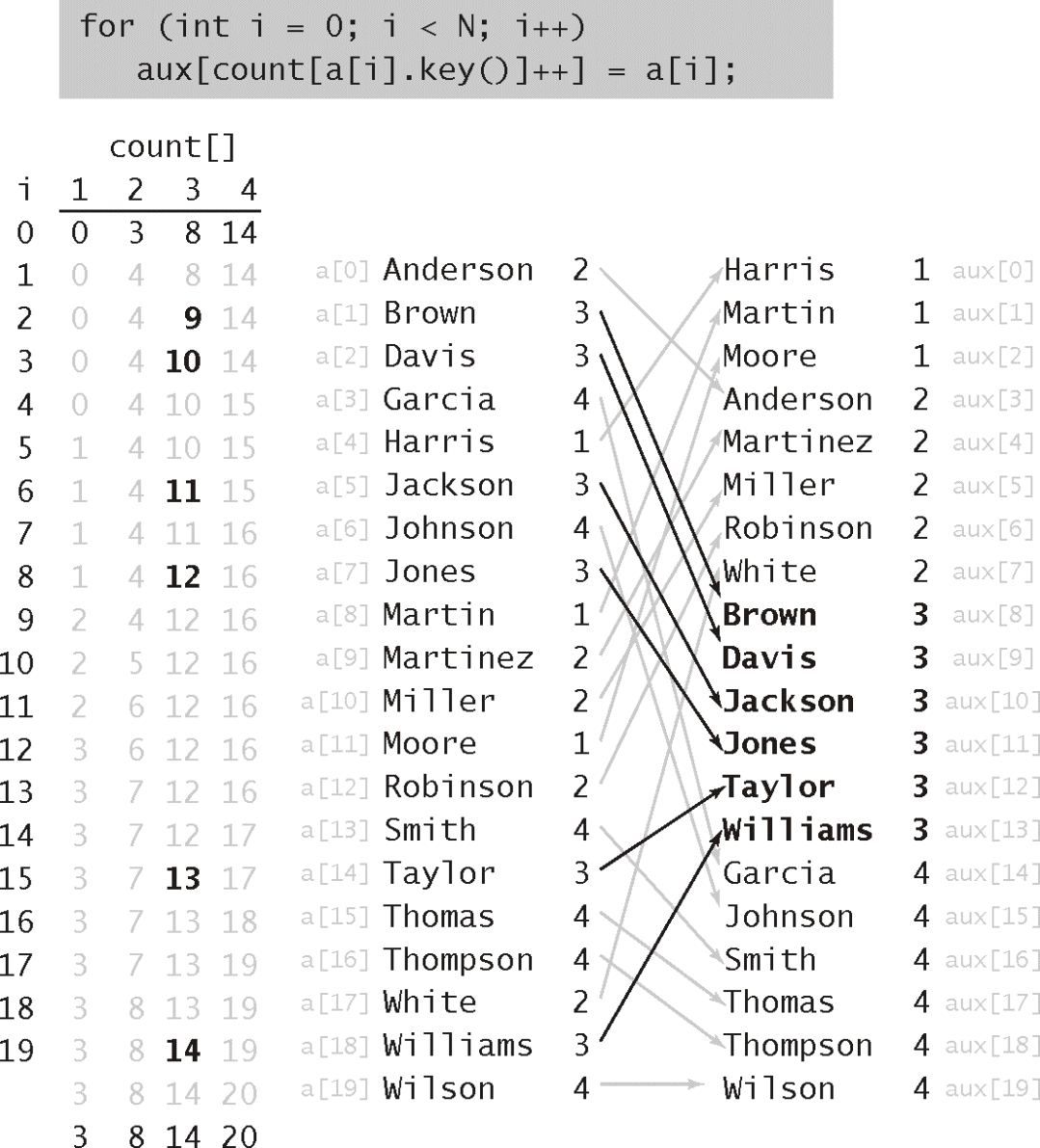1
2
3
4
5
6
7
8
9
10
11
12
13
14
15
16
17
18
19
20
21
| public class Quick3string{
private static int charAt(String s,int d){
if(d<s.length()) return s.charAt(d); else return -1;
}
public static void sort(String[] a){sort(a,0,a.length-1,0);}
private static void sort(String[] a,int lo,int hi,int d){
if(hi<=lo)return;
int lt=lo,gt=hi;
int v=charAt(a[lo],d);
int i=lo+1;
while(i<=gt){
int t=charAt(a[i],d);
if(t<v)exch(a,lt++,i++);
else if(t>v)exch(a,i,gt--);
else i++;
}
sort(a,lo,lt-1,d);
if(v>=0)sort(a,lt,gt,d+1);
sort(a,gt+1,hi,d);
}
}
|





